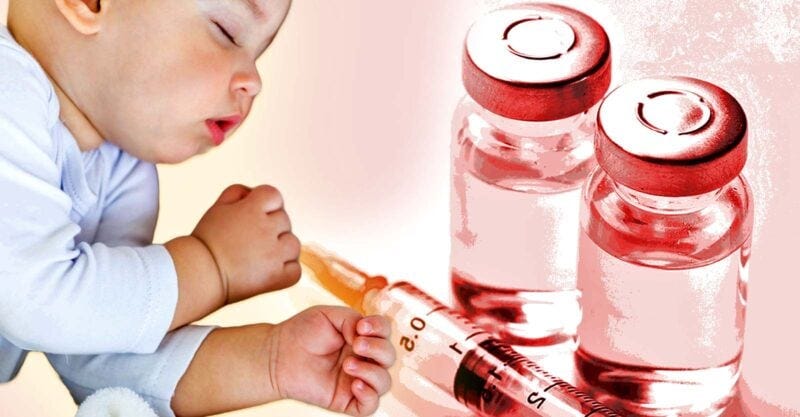Florida Bill Would Require Medical Examiners to Include Vaccination History When Investigating Sudden Deaths of Kids
Wait.. they're not already doing that?!
This article originally appeared on The Defender and was republished with permission.
Guest post by Brenda Baletti, Ph.D.
If passed, the State Bill 188 would allow the state to systematically collect data necessary to determine whether vaccines may be linked to unexpected deaths in young people, according to the bill’s author, Maija Hahn, chapter leader for Children’s Health Defense Florida.
A Florida lawmaker wants to legally require medical examiners to report recent vaccinations in all cases involving the sudden death of an infant, child or young adult.
Florida Sen. Ileana Garcia on Tuesday introduced Senate Bill 188, which would amend existing Florida law by expanding the responsibilities of medical examiners when completing autopsies for sudden deaths, particularly in young people.
If passed, the bill will require examiners to review and document the deceased child’s immunization and medical records and report all vaccines or “emergency countermeasures” administered 90 days before death to the national Sudden Unexpected Infant Death (SUID) and Sudden Death in the Young (SDY) Case Registry, following protocols established by national health agencies.
Medical examiners who fail to comply would face administrative penalties.
Florida medical examiners are not now required to report recent vaccinations when documenting children’s deaths. There isn’t even a place on the online reporting forms the examiners use to report concerns about vaccines, said Maija Hahn, leader of Children’s Health Defense’s (CHD) Florida Chapter, in an interview with The Defender.
“We already have some really good research that shows some concerns with temporal associations with vaccines and sudden death,” said Hahn, who authored the bill. “And we’ve had such an increase in sudden deaths across the country since the rollout of the COVID-19 vaccine, we thought it would be appropriate to ask medical examiners to have a look at the data.”
Hahn added:
“If we don’t look, we’ll never know if that association is meaningful. We’re not going to know that unless we actually look at the data. Statistics are everything. And it’s time that we really get some good figures so we can better understand what is causing sudden death in our young people.”
Advocates are seeking a sponsor for a parallel House bill. They hope to see both bills move through committee and reach the Senate and House floors in the legislative session that begins in January 2026.
CDC underestimates rate of sudden unexplained deaths in childhood
The SUID and SDY Case Registry is a Centers for Disease Control and Prevention (CDC) national surveillance system that monitors unexpected deaths in young people. The registry consolidates information about the circumstances related to the deaths.
Under the proposed Florida law, medical examiners would be required to report all cases of:
Sudden infant death syndrome (SIDS), the unexplained death of a child under 12 months old.
SUIDS, a broader category that includes SIDS but also deaths from other known causes typically excluded from a SIDS classification, such as suffocation, entrapment or congenital defects.
SDY, sometimes used to categorize the death of a child 12 months or older.
Sudden arrhythmic death syndrome (SADS), the sudden, unexpected death of a young person due to cardiac arrhythmia, a subcategory of SDY.
The CDC’s monitoring of the sudden deaths of infants and young people is not comprehensive. Some counties or states participate by sharing data on SUID, and others share data on both SUID and SDY. National coverage is limited, and no locations in Florida currently participate in the surveillance program.
A recent study published in JAMA Network Open found that the CDC underestimates the rate of sudden unexplained deaths in childhood and that certification of sudden unexplained pediatric deaths is inconsistent.
The proposed Florida bill aims to address these gaps. “Uniform reporting and the inclusion of relevant medical information, including recent immunizations and emergency countermeasures, are essential to strengthen public health research, identify risk factors, and improve prevention strategies,” according to the bill’s text.
Hahn said that since a CDC database already exists to monitor these issues, Florida could easily integrate into that system if the bill is passed and begin systematizing data production and collection.
Wayne Rohde, who has tracked sudden death cases in the national Vaccine Injury Compensation Program, told The Defender he applauds Florida, for its “courage and tenacity in tracking vaccine status for all children and young adults.”
“Hopefully, this will lead to more concrete data points to show how vaccines are part of infant and young adult deaths, and hope that other states will follow Florida’s lead,” he added.
U.S. leads other wealthy countries in infant mortality
Each year, the U.S. records more than five infant deaths per 1,000 live births, far exceeding the rates in other high-income countries. After birth defects and prematurity, SIDS is the third leading cause of death among infants.
According to the National Institutes of Health (NIH), SIDS refers to the sudden death of a baby under age 1 with no known cause determined after a full investigation. The investigation typically includes an autopsy, a toxicology report, an examination of the death scene and a review of the baby’s clinical history — including metabolic and genetic testing and a review of the medical history.
In 2004, an expert panel concluded that SIDS is typically a “diagnosis of exclusion,” meaning that it is assigned to a death when all other possible causes are investigated and ruled out.
However, they also noted that some features are common to most cases — namely, an association with sleep, and a narrow age range, typically between ages 2-4 months.
Many researchers suggest that the sudden and unexplained death of thousands of infants each year, often within a few days of vaccination, may be linked to vaccines in some cases.
Peer-reviewed literature has reported a plausible association between vaccines and SIDS for decades.
Originally called “crib death,” SIDS did not exist in mortality statistics before the first mass vaccination programs in the 1960s. By 1972, it had become the leading cause of neonatal death.
In the early 1960s, the number of vaccines administered to most U.S. infants sharply increased. The federal government funded programs enabling the CDC to work with local health departments to vaccinate all children.
By the end of the decade, most U.S. infants received the diphtheria, pertussis, and tetanus (DPT), polio and measles vaccines. The mumps and rubella vaccines also became available.
Rather than examining the link between vaccines and SIDS, public health researchers developed a “triple-risk model” for explaining SIDS. Under that model, SIDS occurs when a baby has an unknown medical condition, is going through an important period of development where the body changes quickly, and encounters an outside stressor, such as sleeping on its stomach.
The American Academy of Pediatrics in 1994 launched a national “Back to Sleep” campaign advising parents to have children sleep on their backs rather than on their stomachs.
The NIH later institutionalized the campaign within the agency. However, in May, it discontinued the program.
NIH renamed the campaign “Safe to Sleep” in 2012, and most official public health work around SIDS has focused on getting parents to put babies to sleep on their backs.
Evidence linking vaccines to sudden infant death continues to mount.
In August, the National Vaccine Injury Compensation Program awarded Abigail and Daniel Sims $300,000 for the death of their 11-week-old daughter, Anna Sims. Anna died in 2013, after receiving four vaccines at her two-month-old well-baby checkup.
Related stories in The Defender
Donate to Children’s Health Defense



For them their whole system is very important. Human lives not so much.
We need to pressure them to do some basic stuff which should have been implemented a long time ago. And would have been if it was regarded important by them.